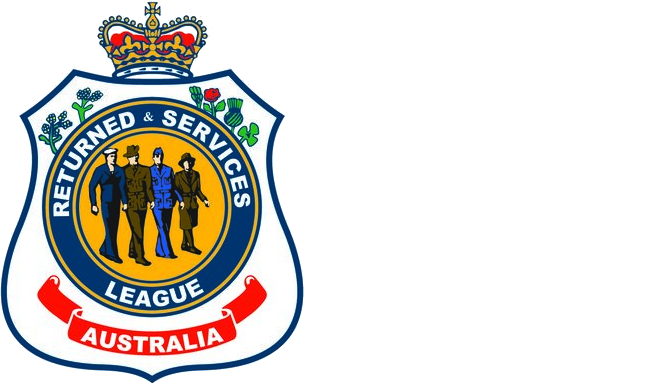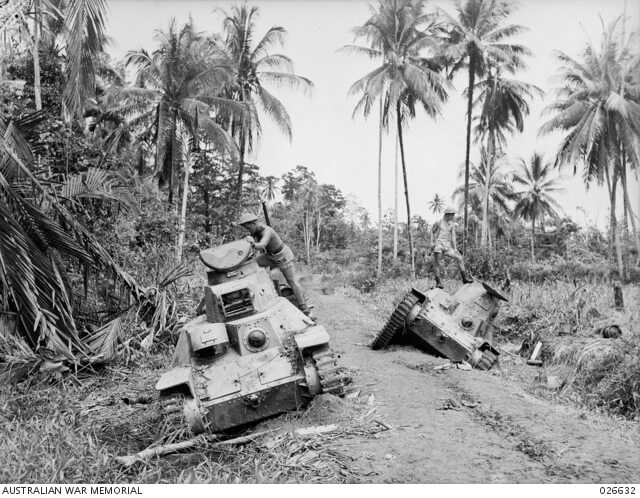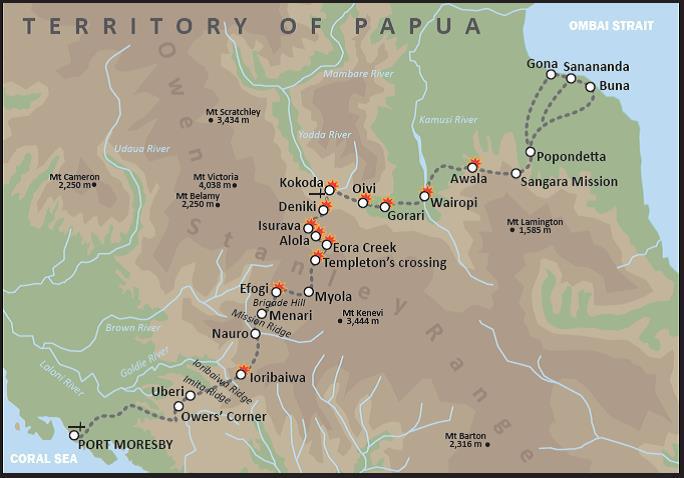Kokoda Trail and Milne Bay – 1941-1942
Milne Bay – Papua New Guinea - 25 August to 7 September 1942
Milne Bay cuts into the eastern tip of the island of New Guinea. Its remoteness, swampish landscape and the prevalence of tropical disease deterred any significant development prior to the Second Word War. Despite these disadvantages, Milne Bay is situated between a number of locations that were at the forefront of the war in the South-West Pacific in mid-1942, namely Port Moresby, Rabaul, Guadalcanal and Buna-Gona. The strategic value offered by Milne Bay’s location prompted General Douglas MacArthur to order the secret construction of an Allied base with airfields to protect the maritime approach to Port Moresby. From this base, Allied aircraft could attack the large Japanese base at Rabaul without flying the dangerous journey over the Owen Stanley mountain range.
The battle began on the night of 25/26 August when the Imperial Japanese Navy landed approximately 1,200 men at Wahahuba Bay on Milne Bay’s north shore. Condemning the Japanese chance of success was a critical error at the outset: they landed at the wrong beach, more than twenty kilometres from their objective.
After three days of fighting the Japanese had pushed the Australians back to edge of their base at Gili Gili. But there was little cause for celebration. The Japanese were tired and hungry. The most potent weapons they brought to Milne Bay were two light tanks that were abandoned after bogging in the mud. Worst of all, most of their supplies were destroyed on the first morning of the battle by the two RAAF Fighter Squadrons based at Milne Bay. Indeed the RAAF’s Kittyhawk fighters were a constant menace to the Japanese, prowling the sky and forcing them to lay hidden in the jungle which restricted their movement during daylight hours.
On the night of 30/31 August, buoyed by the arrival of 800 reinforcements, the Japanese launched an all-out assault on the Allies’ base. The attack was an utter disaster. Scores of Japanese were killed by the lethal array of firepower the Allies had placed along their base perimeter. Not a single Japanese marine breached the Allies’ defensive line.
The following week saw Australian infantry push the Japanese back along the north shore of Milne Bay beyond their original landing point. The remnants of the Japanese task force were evacuated on the nights of 4 and 5 September. The invasion was thwarted and Milne Bay was secure.
The Allied victory at Milne Bay – one of the first on land in the Pacific War – was a confidence injection to Allied armies across the world. By securing Milne Bay, the Allies kept an important base that serviced the Allied war effort for the duration of the war. In addition, the Allies’ continued occupation of Milne Bay made life more difficult for the Japanese fighting on the Kokoda Trail, because they now knew they could not expect supply from the sea even if they made it all the way to Port Moresby.
Kokoda Trail – Papua New Guinea – July to November 1942
The Kokoda Trail was a path that linked Ower's Corner, approximately 40 km north-east of Port Moresby, and the small village of Wairopi, on the northern side of the Owen Stanley mountain range.
The Battle of Coral Sea disrupted the Japanese efforts to capture Port Moresby by a seaborne landing and they turned to an overland advance over the Kokoda Trail instead. Troops of the South Seas Detachment began landing at Gona on 21 July 1942, intending initially just to test the feasibility of the Kokoda Trail as a route of advance, but a full-scale offensive soon developed.
The first fighting occurred between heavily outnumbered elements of the Papuan Infantry Battalion and the Victorian militiamen of the 39th Australian Infantry Battalion at Awala on 23 July. Although steadily reinforced by the battalions of 30th and 21st Brigades, the Australian force was unable to hold back the Japanese. It was poorly equipped, had not yet developed effective jungle warfare tactics, and was fighting at the end of a very long and difficult supply line. A number of desperate delaying actions were fought as the Australians withdrew along the Trail.
The Japanese were finally stopped on 17 September at Imita Ridge, the last natural obstacle along the Trail, a mere 8 km from the junction with the road to Port Moresby. The Japanese held the opposite ridge, 6 km distant at Ioribaiwa.
The tactical situation, however, had now swung in favour of the Australians. Their artillery at Ower's Corner was now in range and their supplies could be trucked most of the way forward; whereas Japanese supplies had to be carried all the way from the north coast. As a result of severe losses suffered by the Japanese on Guadalcanal following the American landing there, the South Seas Detachment was ordered to withdraw to the north coast of Papua and establish a defensive position there. Australian troops of the 25th Brigade began to edge forward from Imita Ridge on 23 September; the Japanese withdrew from Ioribaiwa the next day. In the course of their retreat the Japanese fought delaying actions every bit as determined as those of the Australians. Several difficult and costly battles were fought before the 16th and 25th Brigades crossed the Kumusi at Wairopi in mid-November heading for even more bitter fighting around the Japanese beachheads at Gona, Buna and Sanananda.
The Kokoda Trail fighting was some of the most desperate and vicious encountered by Australian troops in the Second World War. Although the successful capture of Port Moresby was never going to be precursor to an invasion of Australia, victory on the Kokoda Trail did ensure that Allied bases in northern Australia, vital in the coming counter-offensive against the Japanese, would not be seriously threatened by air attack. Approximately 625 Australians were killed along the Kokoda Trail and over 1,600 were wounded. Casualties due to sickness exceeded 4,000.
"Kokoda Trail" and "Kokoda Track" have been used interchangeably since the Second World War and the former was adopted by the Battles Nomenclature Committee as the official British Commonwealth battle honour in October 1957.
Content and Image Source: Kokoda Historical
Further Content Source: Kokoda Trail Campaign - AWM



